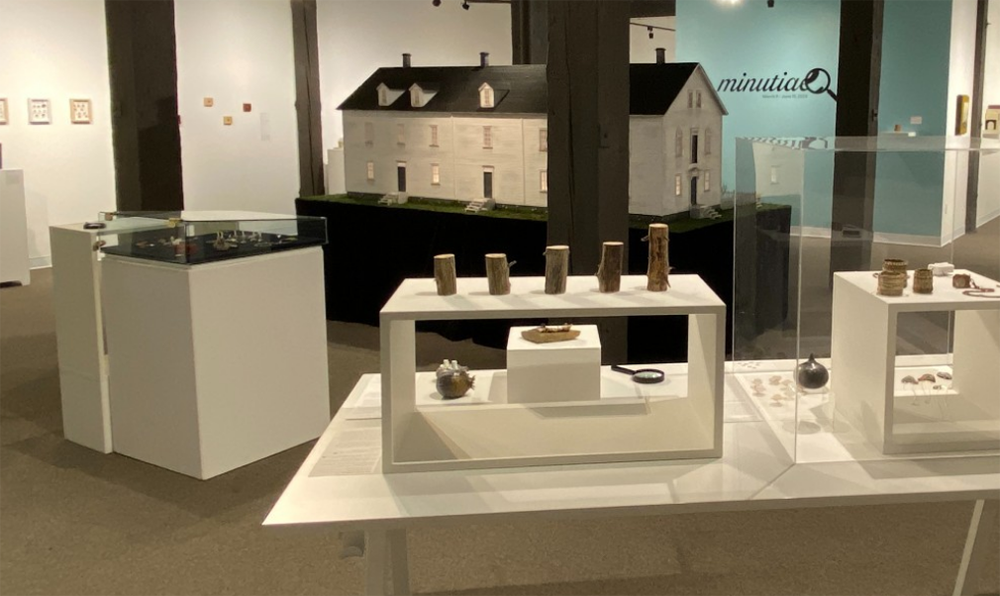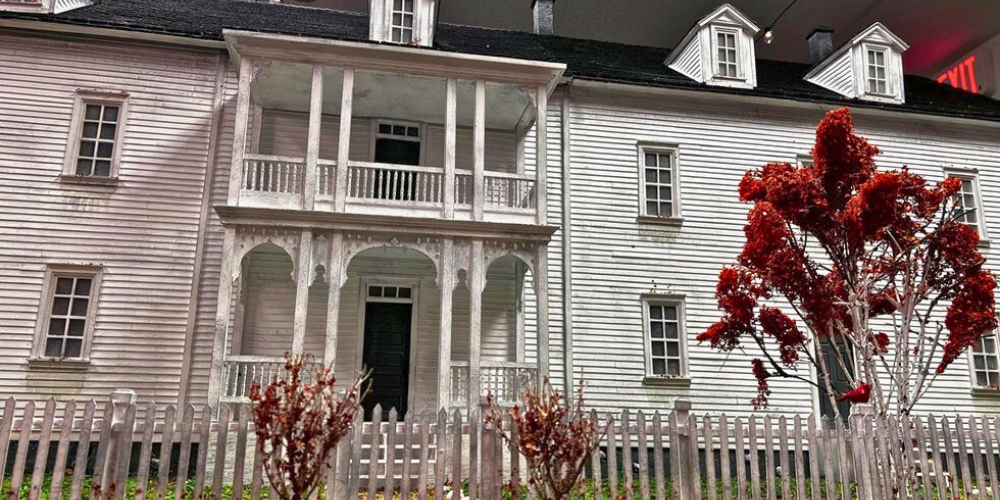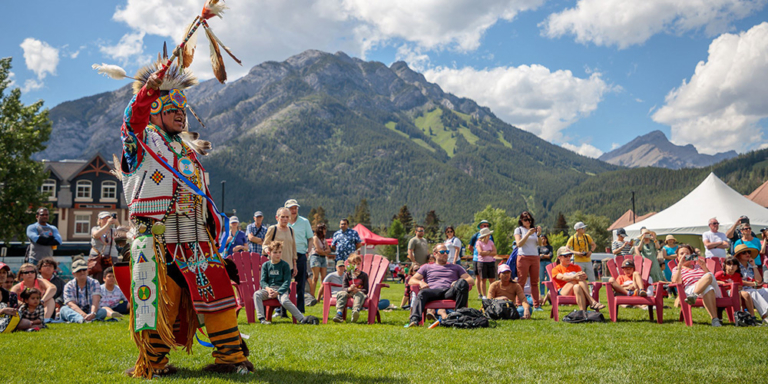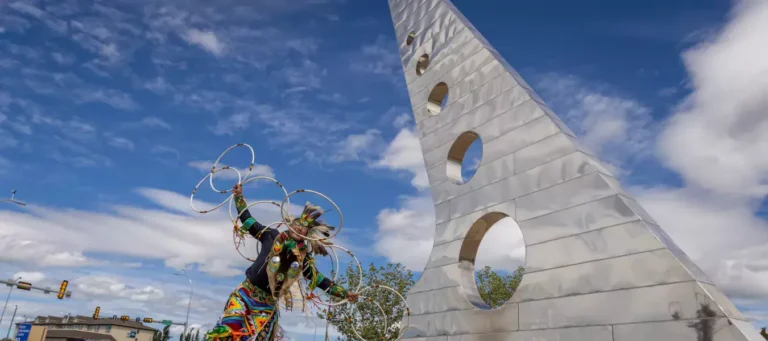Through his artwork, Lance Cardinal, an Indigenous artist from Edmonton, is bringing Canada’s dark past of residential schools into the spotlight.
Cardinal’s latest piece is a miniature replica of the St. Martin’s residential school, originally known as the Desmarais School.
St. Martin’s opened in what is now known as Wabasca, Alberta, in 1901. The school was one of many residential schools where Indigenous children were physically and sexually abused.
Cardinal’s grandparents were among these children. St. Martin’s was the first residential school in Cardinal’s community.
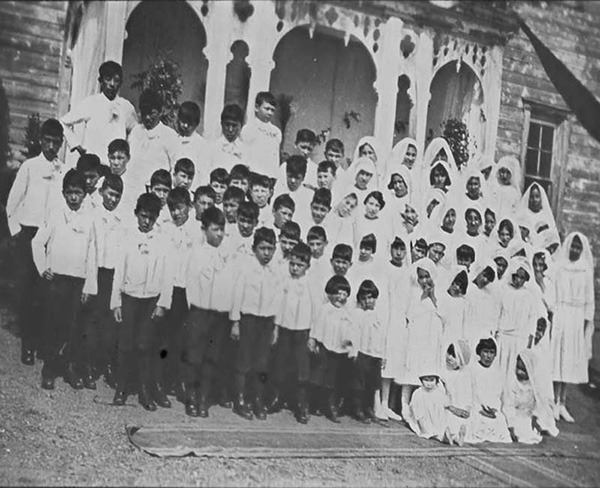

“It’s the school that both of my grandparents went to…this is where they met, this is where they were married, and this is where they went to school,” Cardinal told CTV News Edmonton.
Cardinal came up with the idea of building a miniature replica of St. Martin’s while researching residential schools.
During his research, he found a picture of his grandparents at St. Martin’s, which motivated him to spend several years developing his ambitious project.
Cardinal’s miniature replica of St. Martin’s features a large but unremarkable white building.
When it was still standing, St. Martin’s plain exterior hid years of prejudice and crimes against humanity toward Indigenous peoples.
“What I love most about this piece is you can actually squat down and see the perspective of what those kids would have seen walking into this massive space,” explained Cardinal.
The orange birch tree at the front of the building represents all the students who went to the school and those who never made it home.
Cardinal’s replica is on display at the Alberta Craft Council as part of the Minutiae show, which features miniature artwork created by 54 artists across Canada.
Each piece reflects the artist’s attention to detail and ability to create art in the smallest forms. Cardinal’s patience and precision are second to none.
“I went through hundreds of glue sticks to make this piece, 1,000 Exacto knives and blades, and so a lot of this stuff was handmade and handcrafted,” said Cardinal.
Cardinal’s replica is on display at the Alberta Craft Council until the Minutiae show ends on June 15. After the show, it will be displayed in Calgary until the end of September.
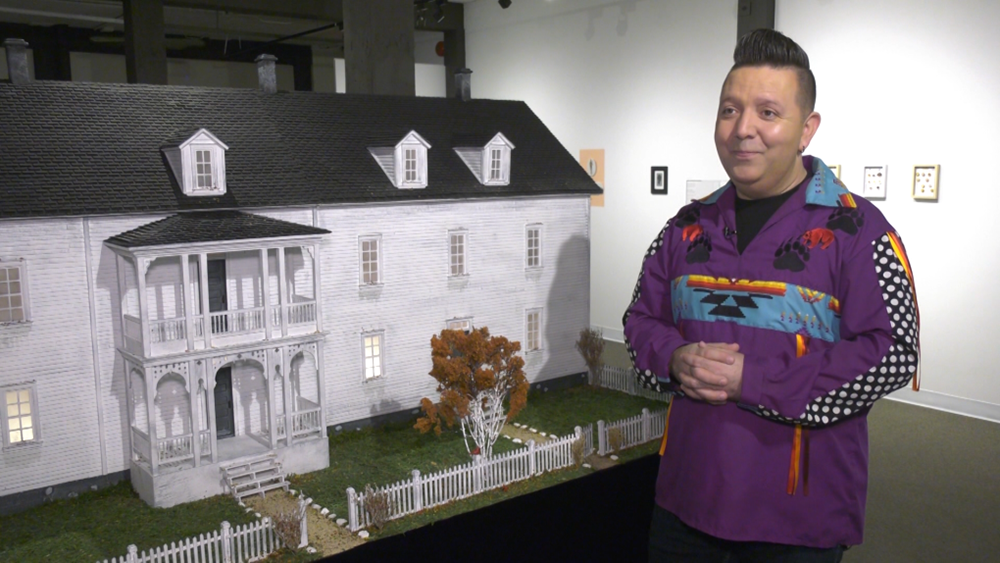

The Road To Reconciliation
On top of researching St. Martin’s, it took Cardinal five weeks of working full-time to complete his miniature replica of the residential school.
The effort Cardinal put into his replica came back to him in the form of catharsis, the process of releasing pent-up emotions.
While constructing the replica and researching residential schools, Cardinal began to understand his grandparents more.
“This helps me understand my grandparents better, why they had such a hard time starting out in life, why my grandfather drank so much, why my grandmother was so afraid of being Indigenous,” said Cardinal.
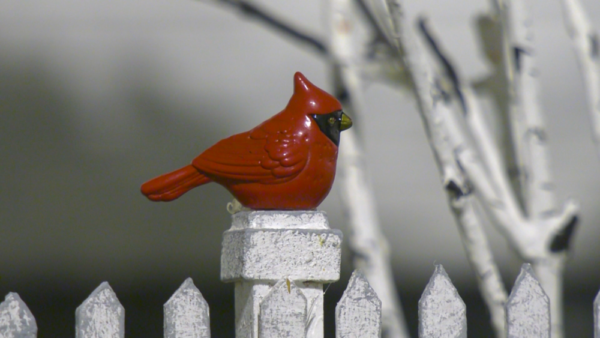

His grandparents passed away several years ago, but Cardinal’s replica commemorates them by placing two red cardinals on a fence.
“My grandma would be very excited that I was doing good, that I was being a good person and bringing positive things to the world,” said Cardinal.
“My grandfather would say good job Wacask, because that was what he always called me, which is now my artist name,” he continued.
Cardinal’s replica is the product of his healing journey. At the end of his journey, he came to terms with Canada’s troubling history of residential schools.
However, coming to terms is not the same as reconciliation.
This month is National Indigenous History Month, and Cardinal hopes his piece will help start discussions about the history of residential schools and reconciliation.
Cardinal believes we are in a new era of self-guided reconciliation, in which Indigenous peoples lead the way, working one-on-one with people, their communities, and each other.
The Indian Residential School Settlement Agreement states that there were over 130 federally operated residential schools in Canada, most of which were in Alberta.
Cardinal’s miniature replica of St. Martin’s represents a small part of the injustice against Indigenous peoples that took place in Alberta.
Reconciliation is not the sole responsibility of Indigenous peoples and the Canadian government.
Canadians can do their part by educating themselves on Indigenous history; June is the perfect month.
Lance Cardinal was featured on Season 3 of Best in Miniature on CBC Gem. Watch the series to see the talented artist creating amazing miniatures.
Follow Lance on Instagram.
